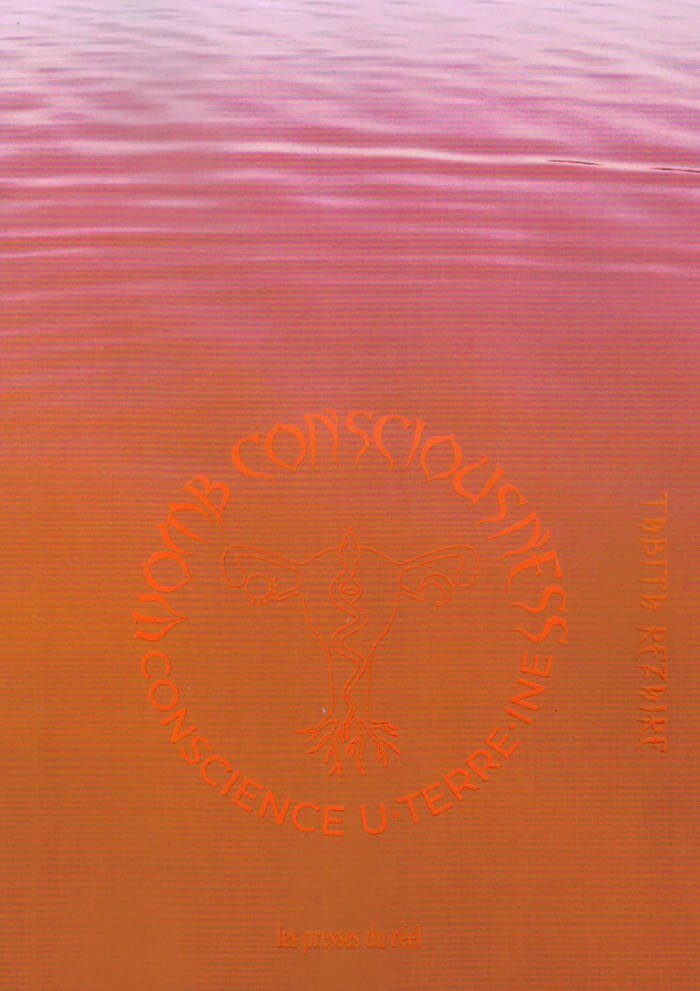Books
Books
published in 2022

Biarritz
Written and edited in Biarritz, Borgerhout and Midsommarkransen, 2016—2021. Dedicated to Räffi, with much love. Another version of this text was published in Pfeil Magazin 10 (Montez Press, 2018); editor: Anja Dietmann, copy-editor: Stacy Skulnik. Epigraph from Numéro Deux (1975) by Anne-Marie Miéville and Jean-Luc Godard. Presented on Saturday February 5th 2022 at Kransen, Borgerhout.
128x201mm, 40p, staple bound. Riso-printed on Arcoprint Edizioni Avorio 90g and Clairefontaine Blue 210g. Design by Kaye–Matthé, typefaces: Tribute, Gillies Gothic Light. Printed by Risiko Press at Kransen, covers silkscreened at Afreux, bound by Drukkerijcollectief De Wrikker. Edition of around 200.

Les sous-communs – Planification fugitive et étude noire
A political and aesthetic critique of racial capitalism and modes of social experimentation in the form of resistance to the colonial commons.
Stefano Harney (born 1962) is Honorary Professor at The Institute of Gender, Race, Sexuality and Social Justice at the University of British Columbia and a Visiting Critic at Yale School of Art. He has held teaching positions in New York, Leicester, London, and Singapore. He now teaches at the Dutch Art Institute. An interdisciplinary scholar, his research spans (the intersections of) social sciences, arts and humanities, as well as the fields of business and management.
Preface by Jack Halberstam.
Collective translation (original title: The Undercommons: Fugitive Planning & Black Study, Minor Compositions, 2013).
Graphic design: Sophie Demay & Maël Fournier-Comte (In the Shade of a Tree).
published in February 2022
French edition
12,5 x 19,5 cm (softcover)
208 pages

The Purple Line
The control of images, their authentication as facts, the possibility of making visible portions of reality removed from our gaze through pixelation–a technique in which the image becomes unrecognizable–are the central themes of the artist's research.
The cycle, created by recombining advertising photos alongside images of mutilated bodies, aims to stimulate a cultural and political reflection on the visual imagery of our contemporary world, on what is made public and what is concealed or censored. Hirschhorn overturns the selective logic with which images are normally shown: he pixelates capitalism, the consumerism to which visual culture is constantly subjected, and de-pixelates the most dramatic reality; he makes visible what comes to our eyes without mediation, and invisible or only partially visible what arrives artificial or filtered.
In addition to essays by the curators and international critics, the catalog includes an anthology of Thomas Hirschhorn's writings and an unpublished text. A section of the volume is dedicated to research materials and the sources used by the artist to create his works: paintings by other authors, advertising and reportage images, books, and short texts. The book is also accompanied by a rich iconographic apparatus that documents the installation views, and the images collected in the Catalog Raisonné, a complete documentation of the 122 Pixel-Collage.
Conceived entirely by the artist on the occasion of the homonymous solo exhibition at MAXXI, Rome, this volume documents Thomas Hirschhorn's research on Pixel-Collage, an impressive cycle of works realized between 2015 and 2017.
Edited by Hou Hanru and Luigia Lonardelli.
Texts by Thomas Hirschhorn, Hou Hanru, Luigia Lonardelli, Lisa Lee, Nataša Petrešin Bachelez, Yasmil Raymond, Dirk Snauwaert.

Womb Consciousness
This collective publication is a singular invitation to discover or deepen the universe of Tabita Rezaire, at the intersection of new technologies, decolonial healing, spirituality and the political history of science. Through numerous contributions from poets, theorists, artists and her friends and relatives, she invokes the wisdom of the womb: the mother womb, the earth womb, the cosmic womb, for us to receive its grace.
This book is part of a series of monographic publications co-published with the Espace multimédia Gantner devoted to women artists in connection with technology.
Tabita Rezaire (born 1989 in Paris) is an artist, yoga teacher, doula, and farmer. Her cross-dimensional practice envisions network sciences—organic, electronic and spiritual—as healing technologies. Embracing digital, corporeal and ancestral memory, she digs into scientific imaginaries and mystical realms to tackle the colonial wounds and energetic imbalances that affect the songs of our body-mind-spirits. Tabita Rezaire is based in French Guiana, where she is birthing AMAKABA (http://amakaba.org).
Rezaire's practice explores decolonial healing through the politics of technology, spirituality Navigating architectures of power—online and offline—her works tackle the pervasive matrix of coloniality . Disseminating light, her digital healing activism offers substitute readings decentering occidental authority, hoping to assist in the "dismantling [of] our white-supremacist-patriarchal-cis-hetero-globalized world screen".

Try Saying You're Alive!
A memoir by Kawasaki-based writer and musician Kazuki Tomokawa, Try Saying You're Alive! offers a semi-fictionalized account of the vibrant Tokyo underground that he has been at the center of since the 1970s.
Recounting sixty years in the life of this "screaming philosopher." Try Saying You're Alive! traces Tomokawa's beginnings in the Akita Prefecture as a "runaway toddler," his adolescent basketball career, and his wanderings as a day laborer, gambler, painter, actor, drinker, and avant-garde folk guitarist. Anecdotes of figures such as novelist Kenji Nakagami, poet Shuji Terayama, actor Tôru Yuri, directors Takashi Miike and Nagisa Ōshima, and musicians Ryudo Uzaki and Kan Mikami animate this impassioned memoir by a legendary musician. This is the first English translation of Tomokawa's writing.
Kazuki Tomokawa (born Tenji Nozoki in 1950 in the Akita Prefecture area of northern Japan) is a prolific Japanese musician, singer-songwriter, artist and poet, one of the pioneers of acid-folk, active on the Japanese music scene since the beginning of the 1970s, companion of musicians such as Kan Mikami, Keiji Haino or Motoharu Yoshizawa. He has recorded more than thirty albums.

She Gave It To Me I Gave It To Her
She gave it to me I got it from her—a poem that choreographs her hands and voice—her voice that reads out loud the book—becoming script—becoming performance—becoming archive — the permanence of her voice in the book—in the book—the presence and absence of their names—She gave it to me I got it from her—It's a book and a choreography, read out loud and handled by a performer, for a group of people.
Clara Amaral is an artist working with text and performance. Her artistic practice is situated in an interdisciplinary perspective, questioning what it means to be a reader, to be a writer, aiming to expand existing modes of reading and writing. Central to her practice is the investigation of innovative publishing modalities and the performative aspect of writing and language through an intersectional feminist approach. www.misted.cc
Written and choreographed by Clara Amaral
Graphic Design Ronja Andersen and Karoline Swiezynski
Copy editor Isabelle Sully
Conceptualization and fabrication of objects Olga Micińska in dialogue with Clara Amaral
Published by Kunstverein Publishing

Silver Rights
An in-depth research project by Elena Mazzi in dialogue with the Mapuche spiritual leader, silversmith and activist, Mauro Millán and Argentinean artist, Eduardo Molinari, about the cultural resistance of the Mapuche people to neo-colonialism in Chile.
Curated by Emanuele Guidi, is promoted by ar/ge kunst Bolzano, and supported by the Italian Council (7th Edition, 2019)–Directorate-General for Contemporary Creativity of the Italian Ministry of Culture, Silver Rights focuses on the ancestral bond between the communities and the land (mapu), a bond eroded and denied by colonising forces that have mutated over the centuries to gradually establish themselves in recent decades through neo-extractivist practices; a settlement process resulting from the convergence of investment policies and commercial agreements between South American governments and foreign multinationals, including the Italian Benetton.
More specifically, the project responds to the narrative proposed by the Leleque Museum, an anthropological museum opened in 2000 in the very lands owned by Benetton; an ambiguous operation that dismisses the Mapuche people as an extinct culture rather than one that is alive and active in the disputed territory, 'musealising' their memory and material culture. Elena Mazzi addresses this complexity by engaging in dialogue with the dense network of relations that the Mapuche community has been consciously weaving for years; a way of understanding the art of diplomacy that, on the one hand, implies building and maintaining international relations between different political and cultural subjects, and, on the other, is implemented in their cosmovisions as a form of radical mediation between land, human and 'more than human' beings.
Contributions by Leandro Martínez Depietri, Riccardo Bottazzo, Enrica Camporesi, Emanuele Guidi, Elena Mazzi, Mauro Millán, Eduardo Molinari, Ana Margarita Ramos, Ya Basta! Êdî Bese!
published in September 2021
trilingual edition (English / Spanish / Italian)